
|   |

|   |
 e-mail: leelakaverivenkat@gmail.com Unique tribute to a maverick musical genius Photos: Jaison February 10, 2017 Murali Samarpanam held at the India International Centre auditorium as an evening of tribute to the "inimitable Gandharva Vaagyekara" Dr. M.Balamurali Krishna, designed and organised by Usha R.K, proved to be a riveting event, featuring six Bharatanatyam dancers from Delhi. Visualising the entire event round Balamurali's Thillana compositions was well thought out - for the maestro's compositions in this genre of Carnatic music, apart from exploring his limitless creative energies in manifold areas of raga and tala intricacies also provided space for his poetic sensibility in the dedicatory passages-all of which have made them an excellent base for Bharatanatyam dancers. Holding the evening together with her own very informative introductions (very much needed for a predominantly north Indian audience) was R.K. Usha for whom this was obviously an emotional journey down memory lane - her several interactions with Dr. M. Balamurali having begun, well over 36 years ago when the master bowled over the barely twenty year old, who on her maiden endeavour at organising a very significant event had timidly approached the already established musician inviting him to sing for the occasion and without the slightest hesitation at a green horn being in charge of this event, the maestro had agreed on the spot. A genius who was adept at playing the violin, the viola, the mridangam and of course singing, and a poet with a great feel for the Telugu language, greatness sat lightly on his shoulders. The arithmetical combinations of rhythm in his compositions could perplex even well known mridangam accompanists with a composition set in a cycle of 17 ˝ beats! Natural as they come, for him music was a way of life, flowing effortlessly. Providing the curtain raiser for the evening, was Sudha Raghuraman entering singing in her golden voice the Balamurali composition which has caught the imagination of almost every person who can sing, "Omkarakarini" in Lavangi, a raga with just four notes the composer invented. Balamurali composed a thillana in Ahir Bhairav - rare for Carnatic music. The dance by Himanshu Srivastava, a disciple of Saroja Vaidyanathan, was lively with neat movement lines for the abstract dance, showing involvement in the fleeting expressional part based on poetic alliteration describing the composer's favourite god Krishna. "Manjula Mohana Murali - Ravali. Raga Vallavi…" as the refrain of "Nadruduttom tanana tom…" was sung by singer Sudha Raghuraman, Ayyappan's nattuvangam of the rhythmic dance patterns woven in, with M.V. Chandershekar's mridangam, all in synchrony, sounded good. 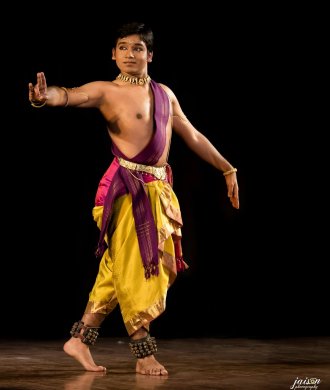 Himanshu Srivastava 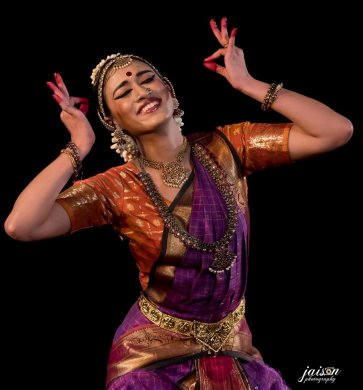 Shreyasi Gopinath Shreyasi Gopinath trained under Saroja and now Jamuna Krishnan presented Balamurali's popular thillana in Kadanakutoohalam, a raga, R.K. Usha mentioned was introduced by Patnam Subramani Iyer. Again the poet in Balamurali goes lyrical while mentioning the beauty of Krishna's face, his lips and the melodies played on his magic flute, and in the signature line "Vadanamate virisene Madhura gaanam baje ...." also carries the name of the ragam. The composition suited the grace of the dancer who has an expressive face. Needless to say in a description of Murali's music, the flute (played by Raghuraman) played a very significant role. Among the interesting asides mentioned in the introductions was the 25000 concerts given by late Balamurali Krishna, his very first participating in the Tyagaraja Aradhana, while a very young boy, noticed by the likes of Musunuri Suryanarayana Murty Bhagavatar, a Harikatha performer who added the name Bala (young or little) to the name of Murali Krishna.. Performing to the Brindavani Thillana was Radhika Kathal, a disciple of Geeta Chandran. Again the lyricism in the sahitya (neera ksheera mei meimarachi sakhala charaacharamella pulakinchi teeyani, hayi anupinche chiru ravali nee murali madhuri) with the notes the words are set to, evoke such sweetness of sound atop sound with rhythm, one of the characteristics of this composer's work. Balamurali, a non conformist musician - but without breaking classical rules, created several ragas like Lavangi, Ganapati, Navashri, Mahati (comprising four notes) and Sarvashree (with three notes only). His Janaka Rajamanjari, a nine volume series, published in 1952, contained compositions in all the 72 melakarta ragas. The sung version through records came later through the Sangeet Recording Company's efforts. His thillana in Ragamalika once again in the one line sahitya ecstatically describes the moon faced Krishna as the epitome of arts and poetry (navanava sundara vilasita sashimukha kavanaadi lalitakala paripoorna...). Turned out in an aesthetic pink and white costume, was Arupa Lahiri, a disciple of Chitra Visweswaran, who presented this thillana in the typical very soft and graceful style of her guru. 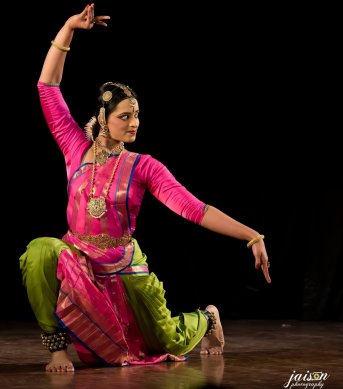 Radhika Kathal 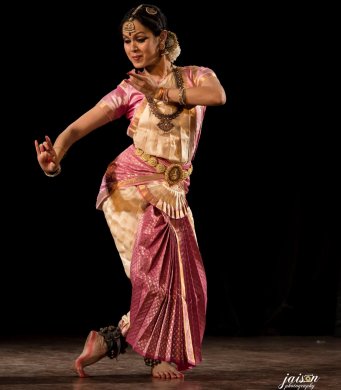 Arupa Lahiri 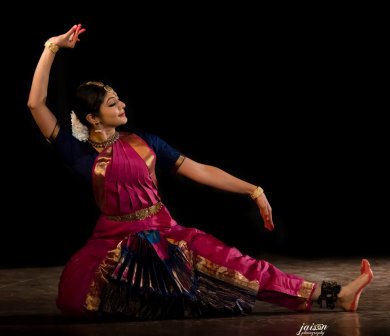 Dakshina Vaidyanathan 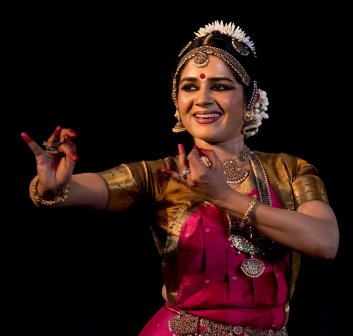 Ragini Chandershekar This master of Telugu composed the odd song in Tamil too. His thillana in Dwijavanti was one such. "Mayakkum murali tillana isaikka viyakkum vallam thei dhiti thei naan aaduven Kanna. Vaa nee Kanna vaa vaa". "I will dance thei dhi ti thei to the mesmerising thillana music of Murali" says the devotee inviting Krishna to join her. Dakshina Vaidyanathan's rendition of the composition was vibrant and charming. Concluding the evening on a high note was Ragini Chandershekar's presentation of the Jayaragamalika Thillana with all the griha bhedam Balamurali was adept at. Set in Kalyani, Shankarabharanam, Mohanam, Hindolam and Darbari Kanada, the dancer's very lucid and immaculate movements along with the coordinated accompaniment made for a fine end to the enjoyable evening, which had a good audience at the IIC. A complete dancer, Ragini would be well advised to lessen the ornaments on her petite frame.  Writing on the dance scene for the last forty years, Leela Venkataraman's incisive comments on performances of all dance forms, participation in dance discussions both in India and abroad, and as a regular contributor to Hindu Friday Review, journals like Sruti and Nartanam, makes her voice respected for its balanced critiquing. She is the author of several books like Indian Classical dance: Tradition in Transition, Classical Dance in India and Indian Classical dance: The Renaissance and Beyond. Post your comments Please provide your name and email id when you use the Anonymous profile in the blog to post a comment. All appropriate comments posted with name & email id in the blog will also be featured in the site. |